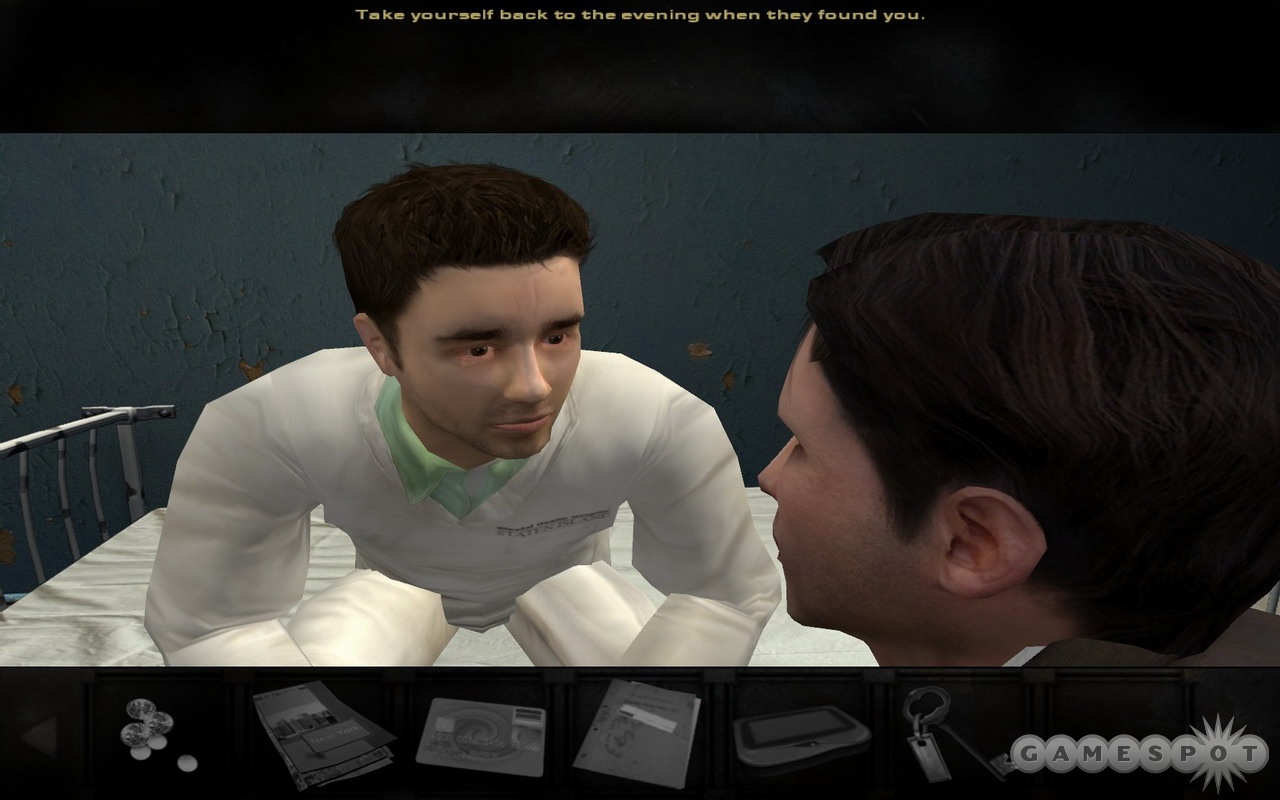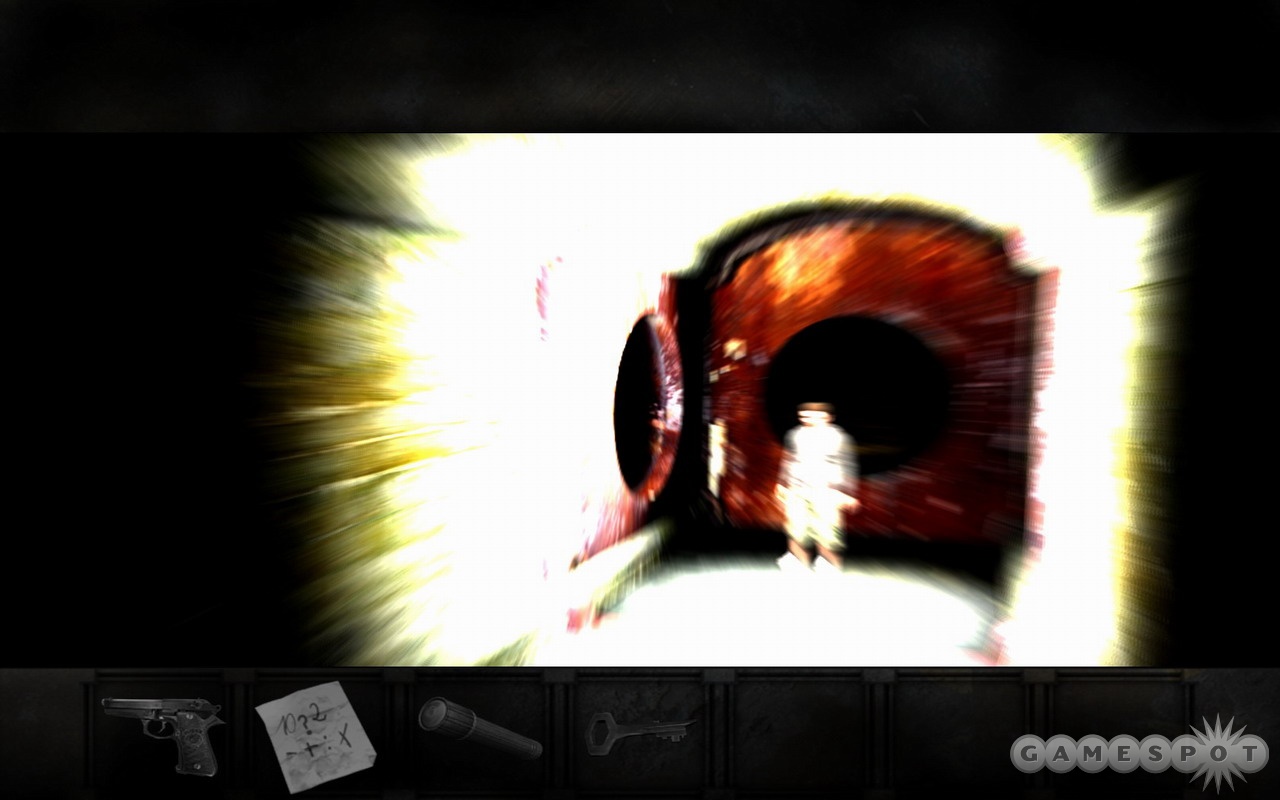If you're looking to chase the blues away, don't go anywhere near Overclocked. This point-and-click adventure from developer House of Tales is a certifiable downer in every possible way. It's set in a rainy, windswept New York City being deluged by the storm of the century. The protagonist is a forensic shrink looking into cases of contagious psychosis. That is, when he's not dealing with divorcing his wife. Much of the game takes place in a dungeon of an asylum that should have been closed down in the 1890s. And just about everybody you run into displays the famous New York hospitality that makes the city beloved across the nation.

Sound like fun yet? But even though the game seems geared to have you reaching for the Prozac by the end of the first chapter, Overclocked still manages to draw you in. At first, the game holds the same morbid appeal as a car accident in that you just have to stick around to rubberneck and see how bad things can get for all the poor people involved in this train wreck of a tale. After the initial fascination fades, the game hooks you into unraveling the mystery with a great blend of realistic characterization, fast-paced and well-written dialogue, and expertly integrated point-and-click puzzles.
You play Dr. David McNamara, an expert psychologist in memory recall called in by NYPD detective Joe Moretti to do some head-shrinking on five teenagers who went bananas in an extravagantly violent fashion and were subsequently found wandering the streets of the Big Apple. All have been locked up in an asylum on Staten Island that's about as creepy as the average haunted house and is administered by a resentful doctor and a head nurse who's borrowed her hairstyle and attitude from Nurse Ratched. Your goal is to find out what happened to these mental cases, but this task is complicated by McNamara's own anger issues and full-blown marital meltdown.
Much of the story revolves around looking back through the eyes of McNamara's patients. Every time he begins analysis sessions with the wackos in question, the game flips into a flashback mode that puts you in their shoes before they went crazy. This is where nearly all of the puzzle-solving takes place, as McNamara deals mainly with conversations and playing amateur gumshoe until the hands-on conclusion. The average brainteaser here is fairly traditional. You fool around with codes to open doors, use items like metal bars, gloves, and rocks in various ways to accomplish objectives, and so on. It's should all be familiar to anyone who's played a point-and-click adventure sometime over the past couple of decades.
But the game doesn't beat you down with adventure-game cliches. While you have to pick up the odd item, you're not hoarding stuff like a shopping-cart lady. Generally, you've got no more than a handful of puzzle-solving objects in your possession at any one time, and they are always sensible accoutrements like a brick or a flashlight or a can of gas needed to fire up a Molotov cocktail. Grabbing a flag off a jeep for no apparent reason is about as illogical as the game gets, and its usefulness becomes obvious in just a couple of minutes. This change in adventure philosophy is nicely hammered home at the very start of the game. When McNamara heads to the Staten Island Ferry dock to catch a ride to the asylum, one of the first things he can click on is a giant rope. Naturally, given traditional adventure-game logic, you'll try to pick it up--only to have the good doctor quite sensibly retort, "I'm not going to drag that around with me." Point taken. And appreciated.
All this reliance on common sense when it comes to solving puzzles makes Overclocked move along at a pretty quick clip. It's amazing how not having to constantly pixel hunt speeds up gameplay (although there are a couple of really dark scenes that do require some careful looking around). Dialogue has also been written with an eye on the clock. While it's unfortunate that sentences can't be skipped through without bypassing whole scenes, every line is delivered in a smart, snappy fashion, so at least there is no meandering. Characters almost always get right to the point. Another plus for those who don't like wasting any time is the smooth interface. Nobody's reinvented the wheel here, although the old point-and-click formula is handled perfectly with cursor icons that change to eyes, hands, opening doors, and the like depending on how you can interact with objects. No muss, no fuss.
Look and sound might cause a few grumbles, though. The 3D engine on display here is a couple of years behind the times when compared to PC gaming in general. Too many rooms are devoid of details, as if the developers ran out of time or budget to furnish them properly. At times, it seems like you're on a half-finished movie set. Animations are awkward, especially when McNamara runs, and a lot of annoying canned animations slow the game down, too. McNamara's ponderous kneel-down every time he talks to a patient seems to take a thousand years. Still, the graphics stand up well overall, with a nicely varied color palette and fine details on faces during conversation close-ups. Audio is of a similar good-not-great quality. Voice acting is capable, with only a few characters speaking their lines like they're speaking English for the first time or reciting the yellow pages. The musical score is quite engaging as well, if not exactly varied. You'll likely get very sick of the plink-plink-plink signature piano notes and techno thrash awfully fast.
It's advisable not to go anywhere near Overclocked if you're looking for a game to cheer you up. But for anyone who doesn't mind a dash of hopelessness in an adventure, the immersive story and smooth puzzles in this game come off like a bright ray of sunshine.
